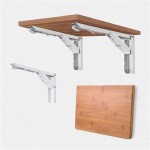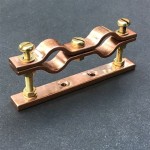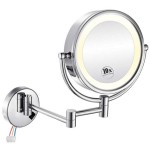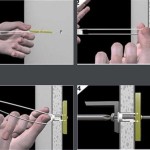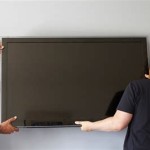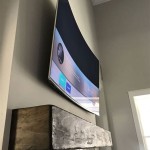TV Wall Mounts for Vizio Televisions: A Comprehensive Guide
Selecting the appropriate TV wall mount for a Vizio television requires careful consideration of various factors. The aim is to ensure both the safety and optimal viewing experience while complementing the aesthetic of the viewing area. This article provides a detailed exploration of the considerations involved in choosing a suitable wall mount for Vizio televisions, encompassing aspects like TV size and weight, wall type, mount types, and installation considerations.
Determining Compatibility: Size and Weight Considerations
The primary determinant in selecting a TV wall mount is the compatibility with the Vizio television's size and weight. Vizio televisions are manufactured in a range of sizes, from smaller models suitable for bedrooms to larger displays intended for entertainment centers. Each model possesses a specific weight that dictates the load-bearing capacity required of the wall mount.
Prior to purchasing a wall mount, the television's specifications should be consulted. Vizio provides this information in the television's user manual or on its official website. The specification typically includes the screen size (measured diagonally in inches) and the weight (expressed in pounds or kilograms). It's imperative to choose a wall mount rated to support at least the weight of the television. It is often prudent to select a mount with a higher weight capacity than strictly required to provide an additional safety margin.
Alongside weight, the Video Electronics Standards Association (VESA) mounting pattern is a crucial factor. This standardized pattern defines the spacing between the mounting holes on the back of the television. The VESA pattern is expressed in millimeters (e.g., 200x200mm). The wall mount must be compatible with the VESA pattern of the Vizio television. Adapters are available for situations where the mount’s VESA pattern does not directly match the television, but opting for a compatible mount from the outset simplifies the installation process and ensures a more secure fit.
Neglecting these compatibility considerations can result in an unstable or even dangerous installation. An overloaded wall mount can fail, potentially damaging the television and causing injury. Therefore, meticulous attention to the television’s specifications and the wall mount’s ratings is paramount.
Understanding Wall Types and Mounting Options
The type of wall to which the television will be mounted significantly influences the selection of the wall mount. Common wall types include drywall (also known as gypsum board), concrete, brick, and wood studs. Each wall type necessitates a different mounting approach and hardware.
Drywall is a relatively weak material and cannot securely support the weight of a television on its own. When mounting to drywall, it is essential to locate the wood studs behind the drywall. These vertical framing members provide the necessary structural support. A stud finder, either electronic or magnetic, can assist in locating the studs. The wall mount should be securely fastened to the studs using lag bolts or screws of appropriate length and diameter.
Mounting to concrete or brick walls requires specialized anchors designed to grip these solid materials. Concrete anchors come in various forms, including sleeve anchors, wedge anchors, and expansion anchors. Brick walls may require similar anchors, although the specific type may depend on the condition of the brick. Drilling into concrete or brick necessitates a hammer drill and masonry drill bits.
In situations where studs are not ideally located, or where mounting to concrete or brick is not feasible, alternative mounting solutions may be considered. These include using a larger mounting plate that spans multiple studs, or utilizing toggle bolts for drywall installations. Toggle bolts provide a secure grip by distributing the weight over a larger area behind the drywall. However, these solutions should be implemented with caution and may not be suitable for heavier televisions.
Beyond the wall type, different types of wall mounts cater to varying viewing preferences. Three primary types are available: fixed, tilting, and full-motion.
Fixed mounts hold the television flush against the wall, offering a low-profile appearance. These mounts are suitable for situations where the viewing angle is already optimal and does not require adjustment.
Tilting mounts allow for vertical adjustment of the television screen. This is useful for reducing glare or improving viewing angles from different seating positions. Tilting mounts are typically easier to install than full-motion mounts but offer limited flexibility.
Full-motion mounts, also known as articulating mounts, provide the greatest flexibility. They allow the television to be extended, retracted, swiveled, and tilted. This type of mount is ideal for situations where the viewing angle needs to be adjusted frequently or where the television needs to be viewed from multiple rooms. However, full-motion mounts are generally more expensive and require more complex installation.
Installation Procedures and Best Practices
Proper installation is crucial for ensuring the safety and functionality of the TV wall mount. While professional installation is recommended for individuals without extensive experience, a basic understanding of the process is beneficial regardless.
Before commencing installation, gather the necessary tools and materials. These typically include a stud finder, level, drill, screwdriver, socket wrench, measuring tape, pencil, and safety glasses. Consult the wall mount’s instruction manual for a complete list of required tools and hardware.
The first step is to locate the studs (if mounting to drywall) or mark the desired mounting location on the wall. Use the stud finder to identify the studs, marking their centers with a pencil. If mounting to concrete or brick, use a level and measuring tape to ensure accurate placement.
Next, attach the mounting plate to the wall. For drywall installations, pre-drill pilot holes through the center of the marked studs before securing the mounting plate with lag bolts. For concrete or brick installations, drill holes according to the anchor manufacturer's instructions and insert the appropriate anchors.
Once the mounting plate is securely attached to the wall, attach the mounting brackets to the back of the Vizio television. Ensure that the brackets are aligned with the VESA mounting holes and securely fastened with the provided screws. Refer to the television's user manual for specific screw size recommendations.
With both the mounting plate and television brackets in place, carefully lift the television and attach it to the mounting plate. Depending on the specific mount design, this may involve sliding the brackets onto the plate or securing them with screws or locking mechanisms.
Finally, level the television and adjust the viewing angle as desired. Use a level to ensure that the television is perfectly horizontal. For tilting and full-motion mounts, adjust the tilt and swivel angles to optimize the viewing experience.
Cable management is an important aspect of wall-mounted televisions. Concealing cables behind the wall or using cable management channels can significantly improve the aesthetic appeal of the installation. Various cable management solutions are available, including in-wall cable kits and surface-mounted cable raceways.
Throughout the installation process, it is essential to prioritize safety. Wear safety glasses to protect the eyes from debris. If working at heights, use a sturdy ladder and have a second person assist with lifting and positioning the television.
Thoroughly inspect the installation upon completion. Ensure that all screws and bolts are properly tightened and that the television is securely mounted. Gently test the stability of the mount by applying slight pressure to the television. If any instability is detected, re-examine the installation and make any necessary adjustments.
Following these guidelines, coupled with meticulous attention to detail and adherence to the manufacturer's instructions, will contribute to a safe, secure, and aesthetically pleasing wall-mounted Vizio television installation.
The selection of a TV wall mount directly influences the overall viewing experience and the longevity of both the television and the wall structure. By giving due consideration to size, weight, wall type, and mount functionality, the user can make an informed decision that guarantees satisfaction and safety.

Vizio Xmf1000 Wall Mount For Lcd Tv Screen Size 32 Inch 55

Secu Full Motion Tv Wall Mount For Vizio 24 28 32 37 39 40 42 43 47 48 49 50 55 Lcd Led Plasma Tilt Swivel Hdtv Cb6

26 Inch Extension Full Motion Wall Mount For Vizio M50 C1 50 Tvs

Secu Full Motion Tv Wall Mount For Vizio 24 28 32 37 39 40 42 43 47 48 49 50 55 Lcd Led Plasma Tilt Swivel Hdtv Cb6

Secu Tv Wall Mount For Vizio 32 39 40 43 48 50 55 Inch D40f E1 D43 E2 D43n D48 D0 D50n D50u D1 E50 E3 M50 P50 C1 E55

Full Motion Tv Wall Mount Fits Vizio D55x V436 V555 V556 M507 V585 P659 M658 G1

Secu Full Motion Tv Wall Mount For Vizio 24 28 32 37 39 40 42 43 47 48 49 50 55 Lcd Led Plasma Tilt Swivel Hdtv Cb6

Secu One Touch Tilting Tv Wall Mount For Vizio 60 65 70 80 M70 C3 P702ui B3 M75 C1 M80 Lcd Led Hdtv Plasma B08

Secu Full Motion Tv Wall Mount For Vizio 19 22 23 24 26 28 29 Inch Led Lcd Tilt Swivel Articulating Bracket E240ar E261va E280 A1 E280i B1

Neweggbusiness Secu One Touch Tilt Tv Wall Mount For Vizio 60 65 70 80 Inch Lcd Led Hdtv Uhd Plasma With Vesa 600x400 400x400mm Loading 220lbs M701d A3r M702i B3 P702ui M801d A3

